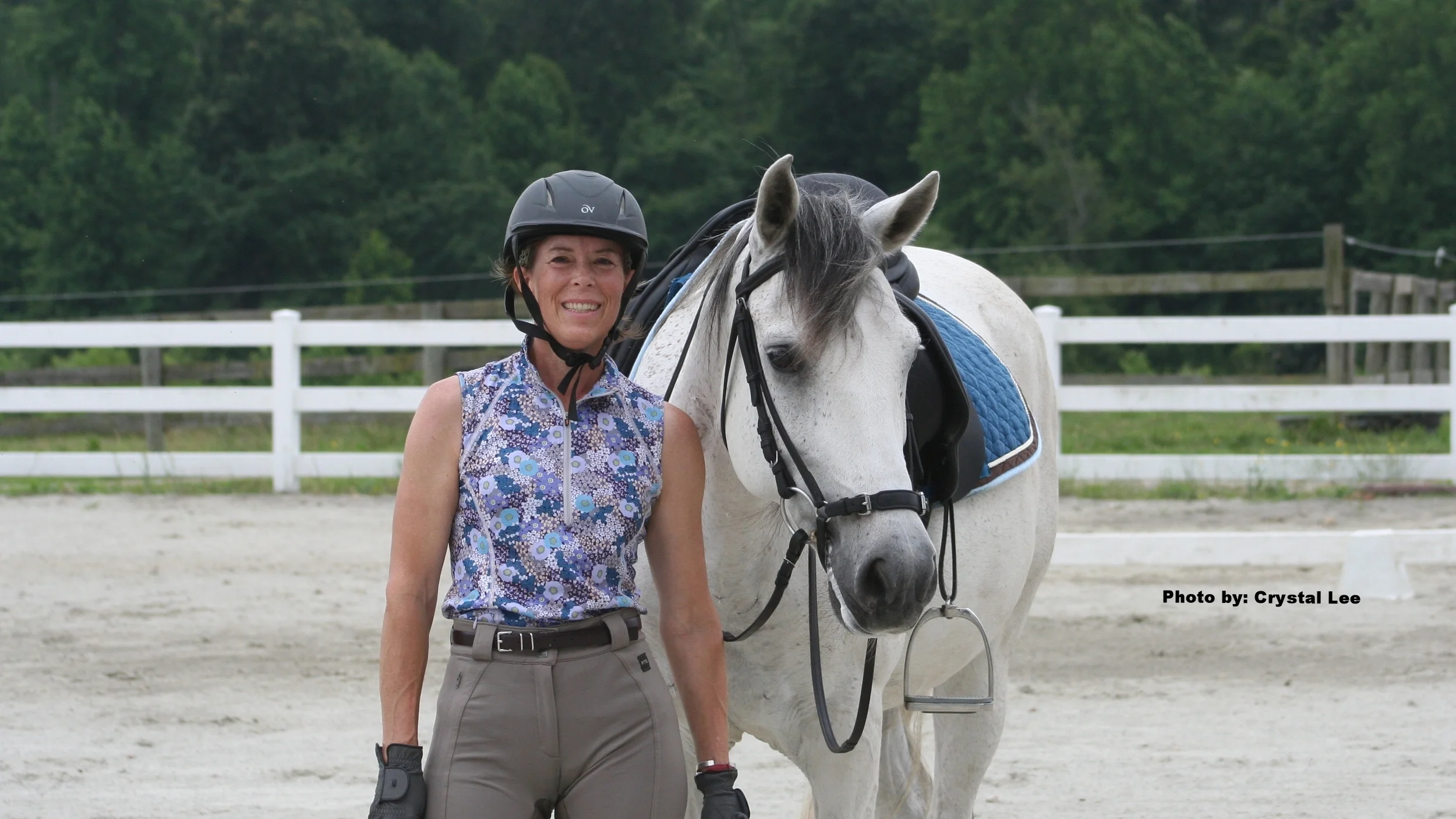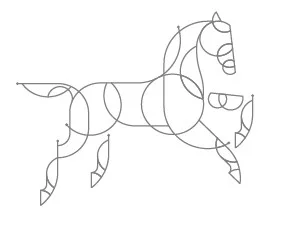Ride A Circle Part II
/Your outside rein turns the horse. For me, this sentence was an abstract concept that I had yet to experience in reality.
At Meredith Manor, Theory Class, is a critical component of learning how to ride. It is in the classroom that students acquire the knowledge base essential to rider development and learn terms like "aids" vs. "cues" and definitions of the lateral movements.
So it is in Theory Class that I learn about the use of my weight, legs, and rein aids to communicate with the horse. And it is in Riding Class that I try the physical application of my knowledge. However, it is one thing “knowing” something and it is another thing “doing” something and even another thing “feeling” something. Usually, my physical body has to play catch up with my mental acquisition. The ironic part of my circle frustration was that until my body proved it could be done, my brain refused to accept the concept that I could keep my horse on the circle through using my outside leg and rein aids.
In class, I learned about the importance of staying centered over the horse on the circle and how to stay on the inside seat bone. I learned that over-twisting the upper body can cause the rider to slip off the inside seat bone and slide to the outside, which inadvertently asks your horse to change course to stay in balance under the rider.
Lightbulb #1. When I exaggerated turning my body to make a point to my instructor that I was using my seat and looking in the direction of my circle, I slid off my inside seat bone and put weight on my outside seat bone, communicating to the horse a change of direction with my weight aid.
I learned that the inside leg at the girth was for the horse to bend around and that the outside leg behind the girth creates a wall or a boundary that defines the outside curve of the circle and helps keep your horse on the curve of the circle. Using your leg aids in the correct position also helps the rider stay balanced with weight on the inside seat bone.
Lightbulb #2. I had no idea where my outside leg was; it definitely was not creating any sort of boundary or wall against my horse’s side.
The inside rein is just used once (if at all) to flex or position the horse’s head in the direction of travel; this rein will soften and may even open (you can have a loop in it creating an opening or door for your horse to move through). The contact between your hand and the horse’s mouth through the outside rein creates another part of the wall or boundary working with the outside leg. Outside rein half-halts are used on the circle to reinforce the outside aids or wall.
Lightbulb #3. My outside rein actually got a loop in it when I pulled on my inside rein – the actual opposite of what I was supposed to have – and my horse could then turn in the direction of the opening (the loop in my outside rein) and away from the rein contact or tension (my inside rein).
In class, I learned that to keep my horse on the circle when my horse tried to switch direction all I had to do was make sure I was correctly using my aids. Simply put: When I slid off my inside seat bone, did nothing with my outside leg, and pulled on my inside rein creating a loop in my outside rein, I was not correctly using my aids.
Your outside rein turns the horse. My brain still refused to believe it would work.
However, armed with understanding the concept and my attitude realigned, I went to my riding lesson on the same horse prepared to try and ride a circle. The first attempt was not successful, but I did not over-twist my body and I did not grab my inside rein. My instructor patiently explained again that I had a “hole in my corridor of aids” and that my horse was going through that hole.
This time I had the insight to ask her where my “hole” was and she told me that I needed to close the hole with my outside aids; I had to make sure my outside leg was back and ON the horse’s side and I had to maintain the CONNECTION with my outside rein. I tried again.
This time about ½ way around the circle, instead of waiting for my horse to switch direction, I made sure my outside leg was against his side and I put my inside hand fixed down against the saddle, which kept my horse’s head flexed in the direction of travel and kept me from pulling on that rein. The minute I felt my horse try to switch direction, I pressed my outside leg firmly against my horse’s side and created more tension in my outside rein; I felt my leg and rein aids work together as a wall against the side of my horse.
Miraculously, my horse continued left on the circle and I experienced a mind-body connection. My mental understanding was reinforced by a successful physical experience.
Lightbulb #4 Close the hole in your corridor of aids.


